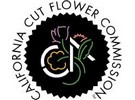It’s a 130-year-old tradition – the Rose Parade on New Year’s Day. In 2020, 65 million people watched the parade and the dozens of flower-adorned floats make their way down Colorado Boulevard in Pasadena, California. But what does it take to create these entries? Where do the flowers come from, and how do they make it from the flowers fields to the decorating pavilions in Southern California?
“Field to Float” shares the story of how California flower farmers contribute to this worldwide tradition, focusing on the parade entries that earned California Grown Certification in 2020. The certification indicates that an entry features at least 85 percent of flowers grown in the Golden State. In the case of the award-winning Cal Poly Universities float, that number was 94 percent California Grown and over 32,000 stems, all donated by flower farmers.
For more information: California Cut Flower Commission
California Cut Flower Commission
PO Box 90225, Santa Barbara, CA
93190-0225
www.ccfc.org
